Cape Verde: A Brief History
Powered by Sun, Sand and No Stress
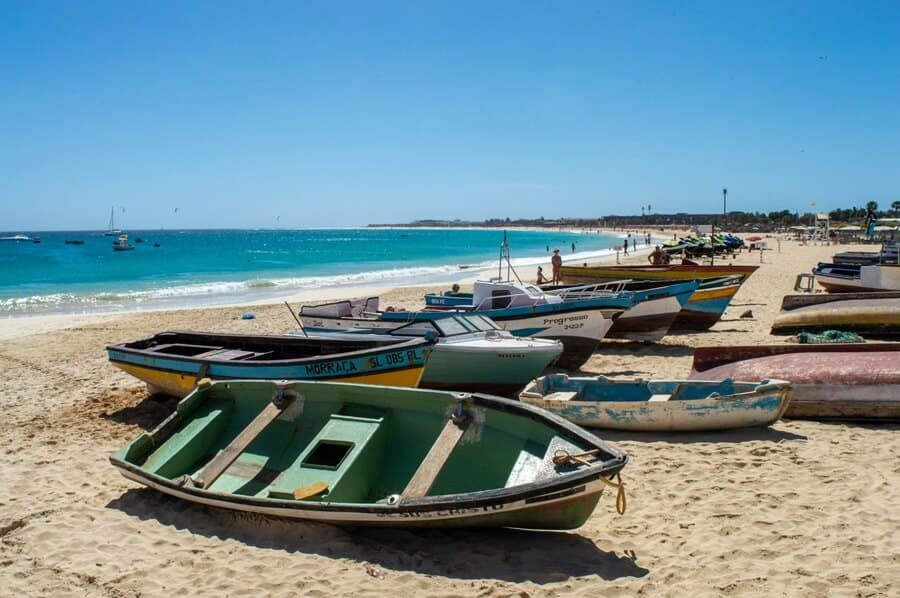
"Being in Cape Verde is like being in the womb of Mother Earth."
Cesária Évora
CAPE VERDE EXPLORER
Welcome to Cape Verde, an archipelago of extraordinary landscapes and vibrant cultural heritage. Nestled in the heart of the Atlantic Ocean, these islands offer a blend of African and Portuguese influences, revealed through their music, cuisine, and traditions. With its captivating history, warm climate, and welcoming people, Cape Verde promises an unforgettable experience for travellers in search of adventure and tranquillity alike. Join us as we delve into the magic of Cape Verde's ten islands, each with its own character and allure.
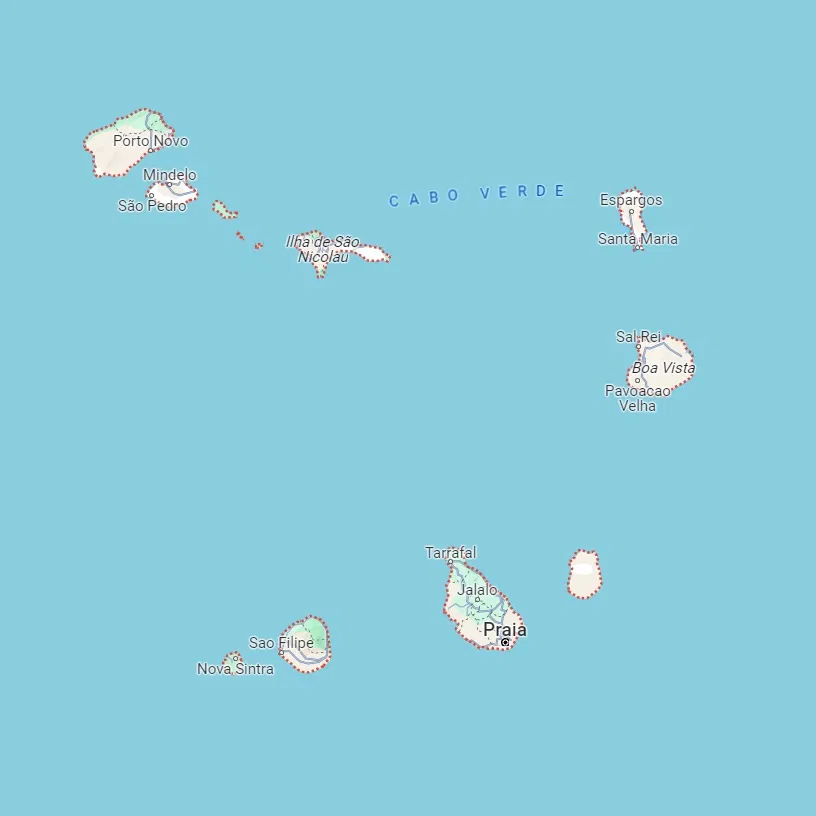
Google Maps: Cape Verde Map
Cape Verde Attractions, History & Culture
Cape Verde is a small island country in the Atlantic Ocean, with Praia as its capital and Portuguese as the official language.
Profile
- Capital: Praia
- Official Language: Portuguese
- Area: 4,033 square kilometers
- Population: Approximately 550,000 (as of the latest available data)
- Currency: Cape Verdean escudo (CVE)
- Government: Semi-presidential representative democratic republic
- Independence: July 5, 1975 (from Portugal)

Photo by Alvin Lim
Cape Verde Geography
Cape Verde, officially designated as the Republic of Cabo Verde, is an archipelago located in the central Atlantic Ocean, approximately 570 kilometres west of the Senegalese coast on the African mainland. This island nation is composed of ten volcanic islands which are geographically categorised into two distinct clusters: the Barlavento (windward) group and the Sotavento (leeward) group, each with its unique features and attractions. These principal islands are accompanied by many smaller islets.
The Barlavento Islands
This northern set of islands boasts a variety of landscapes, from pristine sandy beaches to rugged mountainous terrain.
Santo Antão: As the second-largest island in Cape Verde, Santo Antão is renowned for its verdant valleys and soaring peaks, providing a haven for hikers and nature lovers. The Ribeira Grande Valley is particularly noteworthy here.
São Vicente: This island is home to Mindelo, often referred to as the cultural heart of the nation, due to its prolific music scene and lively nocturnal atmosphere. The deep Porto Grande harbour is pivotal to São Vicente's economy.
Santa Luzia: Santa Luzia is the smallest and uninhabited member of the Barlavento islands, encircled by a vibrant marine ecosystem that makes it a favoured spot for fishing and diving despite its lack of permanent residents.
São Nicolau: Featuring contrasting landscapes of fertile green valleys and arid plains, São Nicolau is recognised for its traditional music, agriculture, and fishing practices.
Sal: Sal is celebrated for its stunning white sandy beaches and has become a magnet for water sports enthusiasts, especially those keen on windsurfing and kitesurfing. The tourism sector dominates Sal's economy, with Santa Maria being the central tourist town.
Boa Vista: Characterised by its desert-like landscapes punctuated with date palms, Boa Vista is home to some of the most expansive beaches in Cape Verde, such as Chaves and Santa Monica beaches, and it is steadily growing as a tourist destination.
The Sotavento Islands
To the south lie islands that are generally flatter compared to their northern counterparts but are still steeped in rich cultural heritage and natural splendour.
Maio: Maio is noted for its serene beaches and forest reserves. It remains relatively unspoilt by development, offering a peaceful retreat. The island also has extensive salt flats, reminiscent of Sal's historical salt extraction industry.
Santiago: As the largest and most populous island, Santiago plays a vital role in Cape Verde's culture and history. The capital, Praia, acts as the economic and political centre of the nation with a dynamic port and diverse city life. Inland Santiago has a mountainous heart, while the coastline offers beautiful beaches.
Fogo: Fogo is dominated by Mount Fogo, an active stratovolcano that is the highest peak in Cape Verde at 2,829 metres above sea level. The volcanic soil is fertile, supporting coffee plantations and vineyards which bolster Fogo's agricultural sector. The volcano's last eruption was between 2014 and 2015, highlighting Fogo's dramatic environment.
Brava: Often referred to as the "Island of Flowers," Brava is the smallest inhabited island in Cape Verde but is rich in vegetation due to its relatively high levels of rainfall. Its jagged coastline and quaint towns like Nova Sintra contribute to its allure.
Collectively, these islands form the distinctive geographical identity of Cape Verde, melding African influences with their own unique creole culture against a backdrop shaped by centuries of volcanic activity. The varied geography supports diverse economic activities such as tourism, agriculture, and fishing while influencing local traditions and lifestyles.
Cape Verde Climate
The climate of Cape Verde is predominantly arid to semi-arid, a consequence of the archipelago's location within the Sahelian zone which is characterised by insufficient rainfall. The precipitation levels across the islands are notably low, with annual averages varying dramatically; the more arid eastern islands may receive as little as 50 millimetres of rain per annum, whereas the mountainous regions can experience up to 300 millimetres.
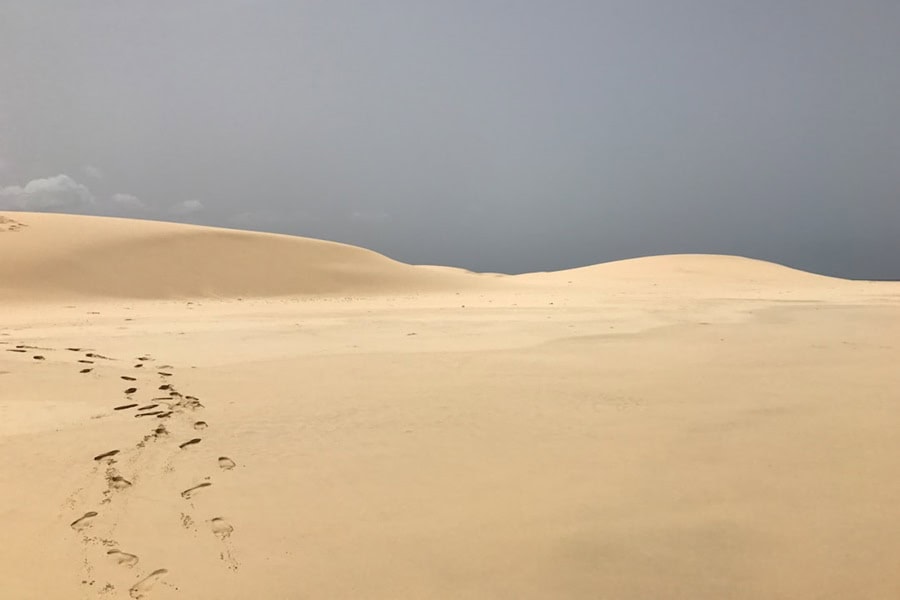
Photo by Paul Smith
Saharan Air Layer (SAL)
The climate is further influenced by the Saharan Air Layer (SAL), a mass of hot, dry and sometimes dust-laden air that originates over the Sahara Desert and extends across the Atlantic Ocean. This can lead to hazy conditions across Cape Verde, particularly during the warmer months from June to August. The SAL can transport Saharan dust to the islands, reducing visibility and occasionally impacting air quality and public health.
Maritime Location
Despite these dry and dusty conditions, Cape Verde's climate is tempered by its maritime location which ensures a moderate range of temperatures throughout the year. The surrounding sea acts as a thermal buffer, preventing extreme temperature variations and maintaining a comfortable climate with averages between 20°C (68°F) and 30°C (86°F).
The Seasons
The islands experience two primary seasons: the 'tempo das brisas' or windy season, which lasts from October to mid-July, characterised by the cooler northeast trade winds; and the 'tempo das chuvas' or rainy season, which typically occurs from August to September and brings higher humidity levels along with sporadic rainfall.
Ocean Currents
Ocean currents also play a significant role in stabilising Cape Verde's climate. The Canary Current, part of the North Atlantic Gyre, moves cool water southwards along the west coast of Northern Africa. This current has a cooling effect on the sea surface temperatures around Cape Verde, which assists in keeping the climate on the islands relatively mild.
Rainfall
The combination of these climatic factors – scarce rainfall, Saharan dust influence, stable temperature patterns, consistent trade winds, and ocean currents – results in a climate that is generally pleasant and amenable to year-round outdoor pursuits. Nonetheless, the lack of significant rainfall presents challenges for agriculture, potable water provision, and environmental sustainability within the archipelago.
Cape Verde History
The archipelago of Cape Verde boasts a compelling history, emerging from an uninhabited group of islands to become a nation with a distinct identity. Before the arrival of Europeans in the 15th century, there was no recorded evidence to suggest that the islands were inhabited. It was Portuguese explorers who first set eyes on the islands, and by 1456, Venetian navigator Alvise Cadamosto, under the patronage of Portugal's Prince Henry the Navigator, confirmed their existence.
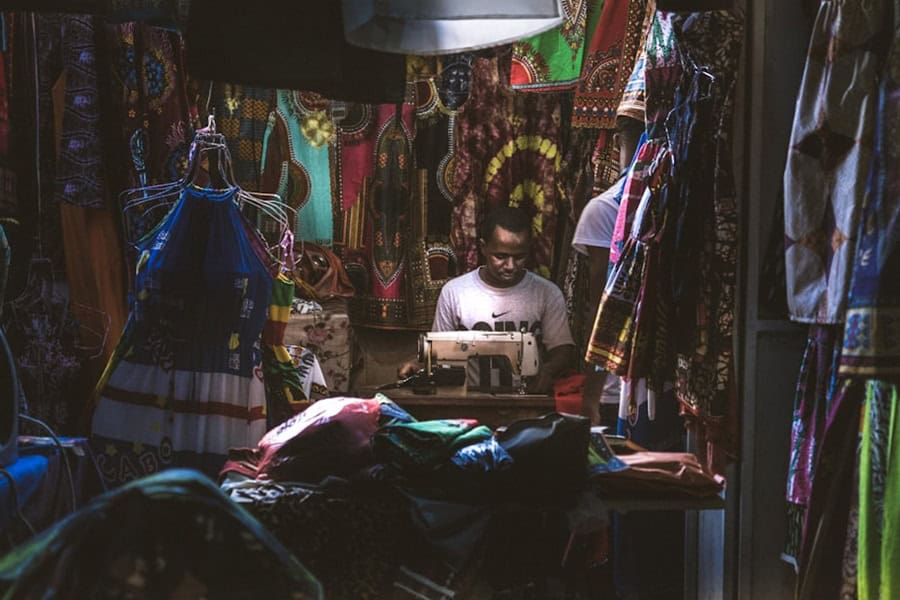
Photo by Danique Tersmette
Portuguese Colonisation
Recognising their strategic importance in the burgeoning age of exploration and trade, the Portuguese began colonisation efforts in 1462, with the establishment of settlements on Santiago and the founding of Ribeira Grande, now known as Cidade Velha. This site quickly became an indispensable port in the transatlantic slave trade, serving as a commercial centre for the trafficking of enslaved Africans to the Americas.
The Slave Trade
During this period, Cape Verde flourished as a trading post and refuelling station for ships, accruing wealth and experiencing a period of growth. The slave trade contributed to the economic prosperity of the islands but also to the development of a Creole culture, as African and European influences melded.
19th Century
The decline of the slave trade in the 19th century precipitated an economic downturn for the islands. Attempts to shift to an agricultural economy were repeatedly hampered by severe droughts and frequent famines. World War II heralded a resurgence in strategic interest, as Cape Verde served as an important air and naval base.
20th Century
The post-war era saw a burgeoning independence movement take root. In 1951, Portugal reclassified Cape Verde from a colony to an overseas province, a move intended to pacify growing calls for autonomy. Nonetheless, driven by wider African decolonisation movements, the African Party for the Independence of Guinea and Cape Verde (PAIGC) spearheaded the push for liberation from Portuguese control.
Independence
Following the Carnation Revolution in Portugal in April 1974, which resulted in a military coup and the fall of the Estado Novo regime, the path to independence for Portugal's colonies was laid clear. On July 5, 1975, Cape Verde was granted independence, turning a new page in its history.
Today
The nascent Cape Verdean state faced numerous challenges in its early years, including limited natural resources and scant infrastructure. Under the leadership of its first president, Aristides Pereira, efforts were directed towards nation-building and economic development. Today, Cape Verde has evolved into one of Africa's most stable democracies and has experienced steady economic growth, largely driven by service industries such as tourism and international shipping services.
The history of Cape Verde is deeply etched into its culture today – a culture shaped by its African roots and complex colonial legacy, reflecting a journey through eras of slavery, colonisation, and ultimately, self-determination.
Cape Verde Culture
Cape Verdean culture is a captivating fusion that reflects its African origins and the enduring legacy of Portuguese colonialism. This blend of influences has given rise to a rich tapestry of customs, traditions, and an artistic heritage that is uniquely Cape Verdean.
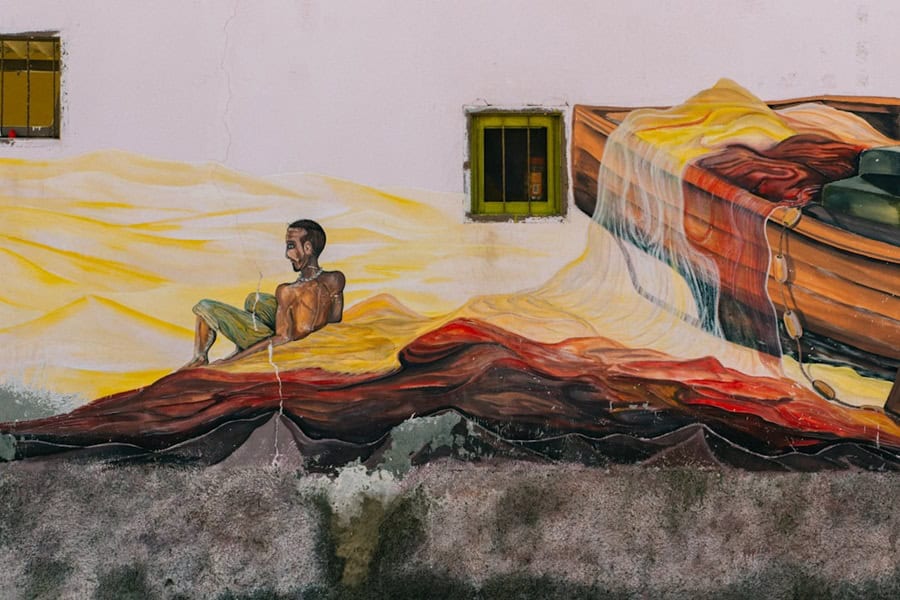
Photo by Krisztian Tabori
Music
Music occupies a central place in Cape Verdean culture, serving as a means of entertainment, storytelling, and historical preservation. The archipelago is renowned for its diverse musical genres that have flourished on the islands.
- Morna is synonymous with Cape Verdean music, often likened to the blues for its soulful and melancholic melodies. Characterised by its slow tempo and emotive, lyrical content, Morna often delves into themes of longing, love, and nostalgia for the homeland – a sentiment known as 'sodade' in Creole. Cesária Évora, affectionately referred to as the "Barefoot Diva" due to her habit of performing without shoes, remains the most iconic figure associated with Morna. Her international acclaim propelled Cape Verdean music onto the global stage, drawing attention to the island's rich cultural heritage.
- Funaná is an exuberant and spirited genre that traces its roots to the African rhythms brought by enslaved people. Initially suppressed by colonial authorities due to its association with rebellion and African identity, Funaná has experienced a revival and is now celebrated as an integral part of the national culture. It features rapid rhythms produced by the 'ferrinho', a metal bar scraped with a knife or other metal object, accompanied by the accordion.
- Coladeira is another popular music genre that melds Brazilian, Caribbean, and African influences, resulting in a lively and danceable rhythm. Derived from Morna, Coladeira is more upbeat and often incorporates humorous or satirical lyrics that comment on social issues.
- Batuque stands out as one of the most African-influenced musical forms in Cape Verde, traditionally performed by groups of women who sing while creating rhythmic beats using their hands on cloth-covered drums or even on their own bodies. This genre also holds roots in the slave communities of Cape Verde and continues to be a vital aspect of the islands' musical legacy.
Literature
In addition to music, Cape Verdean culture encompasses a vibrant tradition of literature, with writers such as Germano Almeida and Orlanda Amarílis exploring themes of colonialism, identity, and life in the diaspora. The nation's literature often reflects the complexities of its society, interweaving narratives that echo the island's diverse cultural influences.
Art
Cape Verde's visual arts scene is burgeoning, with local artists gaining recognition for works that depict the islands' landscapes, people, and culture. Painting, sculpture, and crafts are increasingly celebrated as part of Cape Verde's cultural festivals and exhibitions.
Cuisine
The cuisine of Cape Verde bears testimony to both African and Portuguese influences. The diet relies heavily on seafood, corn, rice, beans, fruits, and vegetables. Dishes like 'cachupa'—a hearty stew made with hominy, beans, vegetables, and meat or fish—epitomise the fusion of culinary traditions.
Festivals
Festivals play a significant role in community life, with religious celebrations like the festival of São João and secular events such as Carnival providing vibrant displays of music, dance, and costumes that draw from both African rituals and European festive traditions.
Language
Language is also a fundamental element of Cape Verdean culture. While Portuguese serves as the official language used in education and administration, Kriolu (Creole), a language derived from both Portuguese and African languages, is spoken colloquially and serves as a strong marker of national identity.
In essence, Cape Verdean culture is an eclectic mosaic woven from its history—a history marked by adversity and perseverance but also by joy and creativity. From the haunting strains of Morna to the pulsating rhythms of Funaná and Batuque, from their literature and arts to their culinary specialities, Cape Verdeans continue to celebrate their distinctive cultural heritage.
Cape Verde Economy
The economy of Cape Verde revolves around its service-oriented framework, with an increasingly prominent focus on tourism as a pivotal driver of economic activity. With its idyllic tropical climate and picturesque beaches, the archipelago has become a coveted destination for international visitors, offering a significant boost to the economy through job creation, infrastructure development, and foreign exchange earnings.
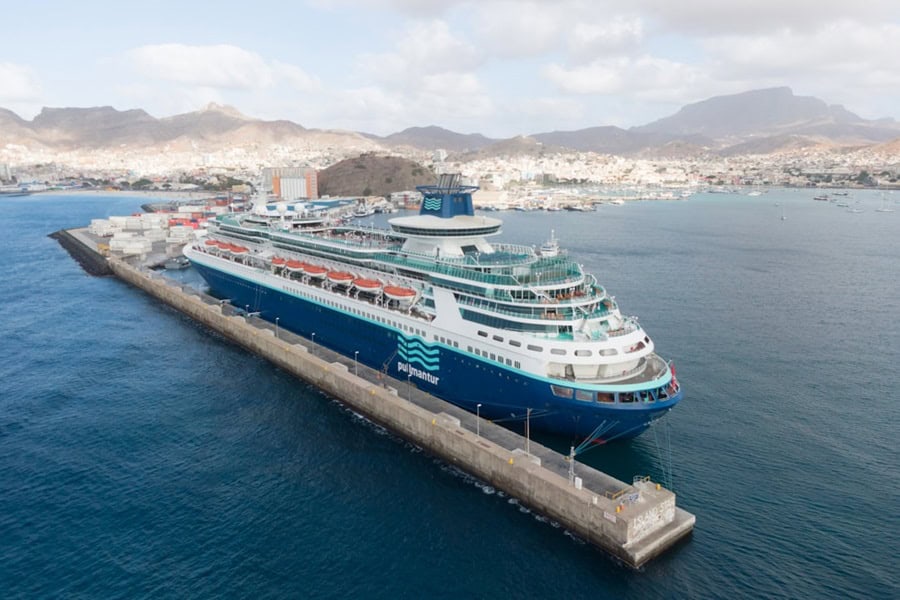
Photo by Datingjungle
Tourism and Remittances
In addition to the tourism sector, remittances from the substantial Cape Verdean diaspora residing abroad serve as a vital and consistent source of income for the country. These financial inflows contribute to domestic consumption and bolster the nation's foreign exchange reserves, providing a stable foundation for the overall economic well-being.
Sustainable Energy
Recognising the imperative of reducing dependence on imported fuels, Cape Verde has taken proactive steps to invest in renewable energy sources. The country's commitment to sustainable energy solutions aligns with global efforts to mitigate climate change and presents an opportunity to significantly reduce the nation's carbon footprint. By harnessing abundant solar and wind resources, Cape Verde aims to enhance energy security and environmental sustainability.
Diversification
Furthermore, the government has embarked on initiatives to diversify the economy beyond tourism and remittances. Efforts to strengthen agricultural output, promote small and medium-sized enterprises, and attract foreign investment have been prioritised to cultivate a more resilient economic landscape. This strategic diversification strategy aims to reduce vulnerability to external shocks and create additional pathways for economic prosperity.
Special Economic Zones
The development of special economic zones and investment in transportation infrastructure are integral components of Cape Verde's economic strategy. These initiatives are designed to attract foreign investment, facilitate trade, and enhance connectivity within the archipelago and with global markets. By bolstering logistics and transportation networks, Cape Verde aims to strengthen its position as a regional hub for trade and commerce.
Entrepreneurship
Moreover, the government is actively engaged in creating an enabling business environment through regulatory reforms, institutional capacity building, and investment in human capital. These endeavours are geared towards stimulating entrepreneurship, innovation, and economic competitiveness.
Challenges
Notwithstanding the numerous opportunities and positive developments in the economy, Cape Verde continues to face persistent challenges related to fiscal sustainability, unemployment, and income inequality. Addressing these issues requires concerted efforts in policy formulation, social welfare enhancement, and inclusive economic growth to ensure the well-being of all citizens.
In summary, Cape Verde's economy is undergoing a transformative evolution, driven by its burgeoning tourism sector, resilient diaspora remittances, commitment to renewable energy, and strategic efforts to diversify economic activities. The nation's initiatives aimed at fostering sustainable development, enhancing infrastructure, and nurturing a conducive business environment underscore its ambition to attain enduring economic prosperity while addressing prevailing socio-economic challenges.
Cape Verde Demographics
The demographic makeup of Cape Verde is characterised by a rich blend of mixed African and European ancestry, reflecting the archipelago's historical legacy as a former Portuguese colony and a significant centre for trade and cultural interaction. This amalgamation of diverse ethnicities and cultural influences has given rise to a distinctive and vibrant population with a multifaceted identity.

Photo by Belinda Fewings
Language
Portuguese serves as the official language of Cape Verde, utilised in formal administrative and educational contexts. However, the primary language for daily communication among the majority of the population is Cape Verdean Creole, known locally as Kriolu. This creolized language, stemming from a fusion of Portuguese and African languages, stands as a powerful symbol of national identity, encapsulating the historical synthesis of different cultural heritages into a unique mode of expression.
Ethnicities
The population of Cape Verde encompasses a diverse array of ethnicities and ancestral roots, reflecting a fusion of African and European lineages. This diversity is a testament to the historical dynamics of the islands as a melting pot of peoples from various origins. The legacy of transatlantic slavery and intercontinental migration has contributed to the rich mosaic of ethnicities present in contemporary Cape Verdean society.
Diasporic Communities
Furthermore, the Cape Verdean diaspora residing in other countries has played a significant role in shaping the demographic landscape. Substantial communities of Cape Verdean descent are found in countries such as Portugal, the United States, and other European and African nations. The connections between these diasporic communities and the homeland have fostered enduring ties that continue to influence the cultural, social, and economic dynamics of Cape Verde.
Religion
Religiously, Cape Verde exhibits a predominantly Christian population, with Catholicism being the dominant faith. However, there is also a notable presence of other Christian denominations and minority religious communities, reflecting the religious diversity within the nation.
Urbanisation
In terms of population distribution, urban centres such as Praia, Mindelo, and Assomada serve as focal points of demographic concentration, with urbanisation trends shaping settlement patterns and livelihoods across the islands. Rural areas, characterised by agricultural activities and traditional ways of life, also contribute to the diverse fabric of Cape Verdean society.
On the whole, the demographic tapestry of Cape Verde stands as a testament to its complex history, marked by centuries of interaction, trade, and cultural interchange. The fusion of African and European influences has engendered a populace with a rich and diverse heritage, reflected in its languages, customs, traditions, and collective identity.
Cape Verde Political Structure
Cape Verde is widely acknowledged as a stable and democratically governed nation, renowned for its robust governance within the African context. The political structure of Cape Verde is founded on the principles of a semi-presidential representative democratic republic, characterised by a carefully balanced system of governance that upholds the rule of law and promotes civic participation.

Photo by Fierté De Cactus
President
At the helm of the political framework is the President, who serves as the head of state and embodies the highest authority in the country. The President holds significant ceremonial responsibilities, representing the nation both domestically and on the international stage. Moreover, the President plays a crucial role in safeguarding the constitution, promoting national unity, and upholding the fundamental values that underpin Cape Verdean society.
Prime Minister
In tandem with the President, the government is led by a Prime Minister, who serves as the head of government. The Prime Minister is vested with executive authority and oversees the administration's day-to-day operations. This role encompasses formulating and implementing public policies, managing governmental affairs, and representing the government before the national legislature.
National Assembly
The National Assembly, comprising a unicameral legislature, is pivotal in shaping the legislative landscape of Cape Verde. Elected representatives from across the islands convene to deliberate on legislation, ensure checks and balances on governmental authority, and represent the interests of their constituencies. The National Assembly plays a central role in shaping the legal framework, ratifying international agreements, and scrutinising government activities through parliamentary oversight.
Judiciary
The judiciary in Cape Verde operates independently, ensuring impartial adjudication and upholding the rule of law. The judicial system plays a crucial role in interpreting and applying laws, safeguarding constitutional rights, and providing a forum for resolving legal disputes. The judiciary's autonomy is fundamental in ensuring fair and equitable access to justice for all citizens.
Democratic Values
Additionally, Cape Verde maintains a commitment to upholding human rights, fostering social inclusivity, and promoting civic engagement. The nation's political structure is underpinned by a framework that upholds democratic values, protects civil liberties, and provides a platform for citizens to participate in political processes.
Multi-party
The multi-party political landscape in Cape Verde enables diverse representation, fostering a competitive environment for political discourse and policy formulation. This inclusivity allows for a broad spectrum of voices to contribute to national decision-making, reflecting the pluralistic nature of Cape Verdean society.
Overall, Cape Verde's political structure embodies a commitment to democratic governance, rule of law, and civic participation. The nation's adherence to these principles underscores its reputation as a stable and progressive democracy within the African continent.
Cape Verde Attractions
Cape Verde offers a captivating array of attractions that cater to the diverse interests of every traveller. The archipelago's varied islands present a rich tapestry of experiences, blending natural wonders, cultural heritage, and outdoor adventures to create a compelling mosaic of attractions.

Photo by Katarzyna Urbanek
Water Sports
The islands of Sal and Boa Vista are renowned as havens for water sports enthusiasts, alluring windsurfers, kitesurfers, and beach aficionados to their pristine shores. With their crystal-clear waters and perennial trade winds, these islands provide an ideal setting for aquatic activities, making them sought-after destinations for those seeking exhilarating water-based pursuits.
History
Santiago, the largest and most populous island, boasts historic treasures such as the UNESCO-listed Cidade Velha, offering visitors a glimpse into Cape Verde's colonial past. This well-preserved town is steeped in history, providing insights into the nation's heritage and its historical significance in the transatlantic slave trade. The island's multifaceted cultural landscape, vibrant markets, and bustling urban life make it an enticing destination for history enthusiasts and those eager to immerse themselves in the local way of life.
Hiking
For outdoor enthusiasts, Santo Antão's rugged terrain and network of hiking trails provide an idyllic setting for exploration. The island's dramatic landscapes, including lush valleys, towering peaks, and cascading waterfalls, offer an ideal backdrop for hikers and nature lovers seeking adventure amidst breathtaking natural beauty.
Volcano
Fogo, home to its eponymous volcanic peak, presents an awe-inspiring landscape for intrepid travellers. The island's active stratovolcano, Mount Fogo, offers hikers the opportunity to traverse otherworldly terrain and witness the raw power of volcanic activity. The fertile soil surrounding the volcano has given rise to coffee plantations and vineyards, adding an agrarian charm to Fogo's unique allure.
Music
Mindelo on São Vicente is celebrated for its vibrant music scene and cultural festivities. The city reverberates with the sounds of traditional Cape Verdean music, providing visitors with an immersive experience of the nation's rich musical heritage. Mindelo's colourful colonial architecture and lively nightlife further add to its appeal as a cultural hub.
Eco-tourism
Beyond the allure of cultural and recreational offerings, Cape Verde is a paradise for eco-tourists and wildlife enthusiasts. The archipelago's untouched natural beauty, diverse ecosystems, and abundant birdlife make it an ideal destination for nature lovers. From the marine reserves around the islands to the inland oases and endemic species, Cape Verde offers a wealth of opportunities for eco-tourism and wildlife watching.
Each island in the archipelago possesses its own unique charm, inviting exploration and adventure. Whether it's basking in the sun-drenched beaches of Sal and Boa Vista, tracing the historic roots of Santiago, immersing in the natural splendour of Santo Antão and Fogo, or embracing the cultural vibrancy of Mindelo on São Vicente, Cape Verde offers an alluring blend of experiences that cater to a wide spectrum of interests.
In summary, Cape Verde stands out as an example of cultural fusion, political stability, and increasing economic development within Africa. Its strategic location has historically made it a significant player in transatlantic navigation and trade.
FAQ
What are the top attractions in Cape Verde?
Some of the top attractions in Cape Verde include Praia de Santa Maria, Pico do Fogo, Mindelo, Cidade Velha, and Sal Rei.
What is the history of Cape Verde?
Cape Verde has a rich history. It was initially uninhabited until the arrival of the Portuguese explorers in the 15th century. It then became a significant hub for the transatlantic slave trade and later gained independence from Portugal in 1975.
What is the culture of Cape Verde like?
The culture of Cape Verde is a blend of African, European, and Creole influences. It is known for its vibrant music and dance styles such as morna and coladeira. The cuisine, art, and architecture also reflect this diverse cultural heritage.
How can I get to Cape Verde?
Cape Verde can be reached by air through international flights to its main airports on the islands of Sal, Santiago, and Boa Vista. Some airlines that offer flights to Cape Verde include TAP Air Portugal, Cabo Verde Airlines, and Air Senegal.
What is the best time to visit Cape Verde?
The best time to visit Cape Verde is during the dry season, which typically runs from November to June. The weather is warm and sunny during this period, making it ideal for outdoor activities and beach vacations.
Are there any safety concerns for tourists in Cape Verde?
Cape Verde is generally considered a safe destination for tourists. However, it is always advisable to take common safety precautions such as being aware of your surroundings, avoiding isolated areas at night, and keeping an eye on your belongings.
Do I need a visa to visit Cape Verde?
Visitors from most countries, including the United States, European Union, United Kingdom, Canada, and Australia, do not require a visa for stays up to 30 days. However, it's always recommended to check the latest visa requirements before travelling.
What are the popular water sports activities in Cape Verde?
Cape Verde is known for its excellent conditions for water sports such as surfing, windsurfing, kiteboarding, and scuba diving. The crystal-clear waters and consistent winds make it an ideal destination for enthusiasts of these activities.
What are some traditional dishes to try in Cape Verde?
Some traditional dishes to try in Cape Verde include Cachupa (a stew made with corn, beans, and various meats), Pastel com Diabo Dentro (fried pastry filled with spicy tuna), and Catchupa Rica (a festive version of cachupa with additional ingredients).
Is English widely spoken in Cape Verde?
While Portuguese is the official language of Cape Verde, English is commonly spoken in tourist areas, hotels, and restaurants. However, it's always helpful to learn a few basic Portuguese phrases to enhance your travel experience.
Want more?
Sign up to our newsletter